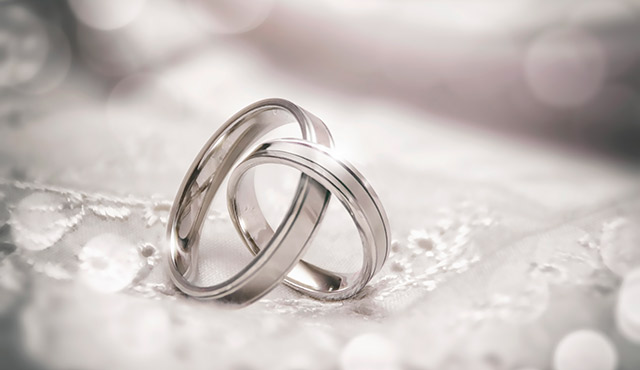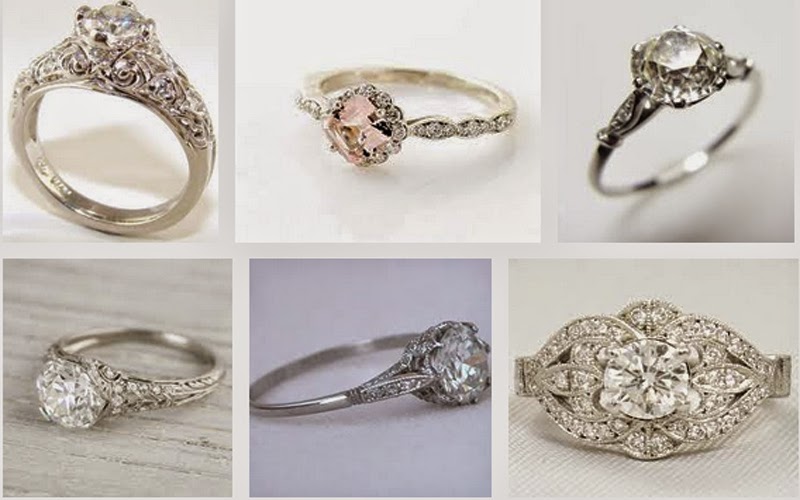Wedding Ring Traditions that Are Still Popular Nowadays

Around the world, people get married every day. It’s what most excited young couples save scrupulously for, planning the perfect day to begin the rest of their lives together. And at an average of £27,000, you want to make sure that your wedding day is nothing short of perfect. But weddings weren’t always about the diamond rings, white dresses, and instagrammable photos. They are full of wonderful rituals that include wedding ring tradition that survived the changing times although some were thankfully forgotten.
History and Origins of the Wedding Ring Tradition

The first wedding on record dates back between 1250-1300 CE and even now the tradition of a ring and a wedding is still going strong with over 31 million people saying ‘I do’ in the United States alone since the year 2000. That’s a lot of vows, veils, champagne, tiered cakes, and happily ever afters. Millions of people joined by the exchange of rings between a blushing bride and handsome groom but where did the tradition of the wedding ring come from and what does that wedding band represent? Is it love? Commitment? Loyalty? An agreement? For a couple to wear their wedding rings they are wearing the traditions of their forefathers, their culture and their countries history all bound together in a symbolic circle that has withstood the tests of time. Depending on where in this wonderful world you are from that a wedding band represents a different meaning and a different promise. But where did the wedding ring tradition stem from? Some say that it all began 1.8 million years ago with the Neanderthals. That’s right even cave men got hitched. The early settlers of our planet would wrap some straps or strings around the wrist of their brides they would prove their pure affection and loyalty. They believed that with this ritual they would bless their wives and promise them a long, healthy, and happy life. And they weren’t the only ancient civilization to wear such objects.
In ancient Egypt, pharaohs would use leather, bone, ivory, and hemp to fashion such an item and it is believed that it is this marvelous ancient civilization that first used the circle as a symbol of eternity, a representation of a never-ending love. With all the mummifications, sacrifices and scarab beetles that we know of the ancient Egyptians, it’s refreshing to know that they were really soppy at heart. In ancient Egypt, rings were a public vow of their union. The Egyptians soon realized that a metal ring could mean that a woman is now allowed to claim her husband’s protection and possessions. This agreement was also replicated in the Roman era, although the meaning of this symbol was much more romantic. The ring would often be given alongside a key to signify that the wife had found a way to her husband’s heart. These early rings were often made of iron and it wasn’t until the medieval era that they were decorated with gemstones, each with a different meaning, ruby signified love, sapphire the heavens and the most powerful gem was the diamond renown for its indestructible nature.
Meaning of the Wedding Ring Tradition in Different Cultures
Unlike the romantic Romans, in parts of early Asia, the tradition of wedding rings had a less amorous meaning. The wedding band was seen as a legal contract between the bride and groom. The rings were fashioned in such a way that the seal was actually devised as a puzzle, which means that if the band was ever removed from the wife’s ring finger it would fall apart, therefore the husband would instantly know if his wife had been unfaithful during a long absence. Nowadays the wedding band tradition of the crumbling puzzle ring has been forgotten. Instead, the ring is usually made big of yellow gold as according to this belief, the more expensive the golden ring is, the happier their marriage will be. The pure gold wedding band is a symbol that shows that the husband is investing in their long-lasting marriage. The origin of this wedding ring tradition is religious in many aspects. However, similar to our modern society, the more money you have, the better looking you are perceived to be. In the western culture, English and American women often wear a ring set. This set is made up of the engagement and wedding ring, however, it is becoming increasingly popular to add an eternity ring to the set, because what girl doesn’t need another ring as a symbol of her husband’s undying love? Each of these rings has a different meaning. The engagement ring is seen as a promise, and the wedding band is in fact the legal binding made up of vows and death to do you part, and the eternity ring symbolizes a never-ending love. In the 16th and 17th century Gimmel rings were often used as betrothal rings in England and Germany amongst other countries. These rings were made up of three bands, two were given to the bride and groom-to-be and the third to the witness. These bands would then be re-joined to form the wedding ring. It wasn’t until the 1600s, that these Gimmel rings started to incorporate delicate emblematic designs such as clasped hands of the early medieval fede ring and sometimes a heart. This imagery has traveled through the ages and can still be found in on Celtic wedding rings with a Claddagh symbol as a representation of loyalty and fidelity within a couple’s marriage. The symbolic nature of weddings rings spans throughout the globe and is still used in some surviving native American tribes. They believe that symbols have a powerful link to their history and culture, often decorating silver rings before giving them to their betrothed.
The Wedding Ring Tradition: Where to Wear
Men didn’t always wear wedding rings. The dual ring ceremonies didn’t appear until the early 1300s in Greek Orthodox churches and it wasn’t until world war two that the fashion caught on in America. This is because young men were bound to serve in a war effort and the wedding band was a constant reminder of the wife that he had left behind fighting for his country. This dual ceremony became so popular during the midst of the war that over 85% of the marriages that took place were dual ring ceremonies. It is not enough to decorate and exchange the rings. They should be worn on a proper finger as well. In most cultures, the newlyweds put the wedding ring on their ring finger, which is the fourth finger of the left hand. There is a beautiful idea behind it. People have believed in vena amoris, or a vein that connects the fourth finger straight with the heart. However, some cultures don’t wear the ring on their left hand. In countries where Catholicism is a common religion, bride and groom wear their wedding bands on their right hand. This is because it is a common thought within the religion believe that the left hand is regarded as ‘evil’, this being derived from the Latin for ‘left’ being ‘sinister’, so instead couples chose to wear it on the right. Dutch Catholics chose to wear their wedding rings on their left hand, whereas Austrian Catholics on their right. This means that in Belgium the hand you chose to wear your wedding band entirely depends on what part in the country you are from. When answering the question where does the tradition of the wedding ring come from? There is no simple answer. It is born of a grand tapestry of interwoven history, culture and religion passed down from ancient civilizations that is still going strong in the modern day. So, when you wear a wedding band, you are honoring the past, the present and the future of the promise you have made.